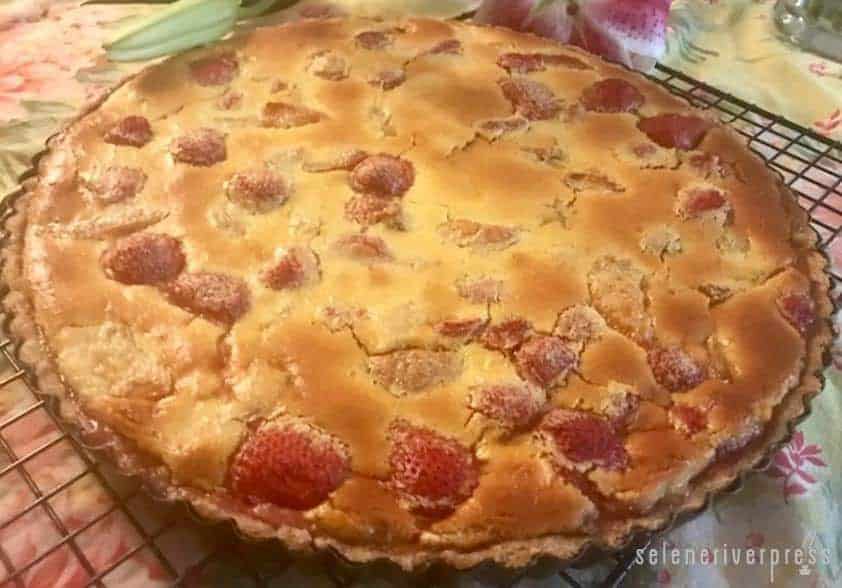It’s been years since I made a commitment to take back my health and alight from the sugar train. I’ll be honest: eliminating all added sweeteners from my diet has never been the easy for me, and it still isn’t to this day. But the enormous benefits I’ve reaped as a result have made it all worthwhile. (Usually, haha.)
Sweeteners are incredibly widespread in the modern diet. There are added sugars in most foods, a prevalence of sugary drinks, and an overload of other insulin-spiking ingredients. Because I understand how disastrous these excessive sugars can be to our physical, mental, and emotional well-being, I see no reason to include them in my diet. This has been the single most important shift in how I approach what I eat.
We’re biologically hardwired to take pleasure in sweet foods, going all the way back to our first sweet taste of mother’s milk. Yet the current overload of sugar in the modern diet has brought many to the point of addiction. Most folks don’t even realize how dependent they are until they attempt to eliminate or drastically cut back on their intake. This can result in a multitude of adverse effects as the sugars grasp to their host. I’m grateful that my own personal experience with how sugars affect me and my health—and most importantly how much better I feel without them—only strengthens my resolve to stay on track. Don’t get me wrong, I still savor a decadent dessert on occasion. But whenever I do, I try my best to use alternative sweeteners in limited amounts.
I’m always on the lookout for suitable substitutions for refined sugar. I want to avoid any excess sugars in my diet, but I still desire a sweet indulgence now and then. Recently, I began experimenting with inositol, a factor in vitamin B complexes that’s found naturally in many foods, likewise in the human body. It’s nearly as sweet as sugar but doesn’t have all the nasty side effects. At first I was intrigued with inositol for its mild low-glycemic sweetness and fairly neutral flavor (which does well in cooking). Other alternative sweeteners, such as stevia, have a pronounced flavor and extreme sweetness.
Further research enlightened me to the fact that the perks I mention above are just the tip of the iceberg! As an occasional sugar substitute, inositol also delivers serious, bona fide health benefits. (Refined sugar, in contrast, is a bane on our nervous system and thus our emotional and mental health. This is the most prominent reaction I notice whenever I veer off track too much.)
Promising developments show that inositol may offer some relief from attention, obsessive, and panic disorders as well as anxiety, insomnia, and mild depression. Additionally, inositol looks to be promising in cases of diabetes and related circulatory and fat metabolism disorders. It also assists with insulin resistance, lowering cholesterol, liver detoxification, hair and nail growth, and psoriasis, to name a few.
This tart was my first venture using inositol for culinary purposes. I was incredibly impressed with the results! The sweetener dissolved and assimilated easily, and it provided enough sweetness that even the most diehard sugar addict might happily consider this a dessert—without the accompanying sugar crash.
I used defrosted and well-drained fruit from last summer’s harvest. It worked incredibly well, though I’d say it would be far superior if you prepared it with fresh fruit (like most anything). The filling is very adaptable. Use any combination of fruit, any spice, and any flavor combinations you enjoy. When I worked at a French catering company, I used to make a very similar tart with apples and a cinnamon-nutmeg custard. It was surreally blissful served warm.
I imagine this would be especially decadent with chocolate. For added texture, you could even use nuts and/or dried fruit. It tastes heavenly whether you serve it warm or at room temperature, though I prefer its stability when allowed to fully chill.
Keep in mind that sugars do much more than simply sweeten your food. They provide physical substance, promote browning, and help the loft of baked goods. Because of that, I cannot attest to how inositol would work in larger concentrations (until I do more experimenting). I’m also not certain about how a higher amount might affect the body. However, according to my research, inositol hasn’t been associated with gastrointestinal distress or the undesirable side effects of other sugar substitutes. I can affirm that inositol functions beautifully in lesser amounts, particularly where sugar isn’t a bulk ingredient…like this tart. So go ahead and harness the nutritional power of inositol while making the most of a summer harvest.
Isn’t it nice knowing you can truly have your cake (tart), and eat it too?
Strawberry-Peach Custard Tart
Makes 1 (11-inch) tart that serves approximately 8.
Prep time: 20 minutes, plus time for pastry to chill
Cook time: approximately 35–55 minutes (depending on juiciness of the fruit you use), plus 10 minutes chill time.
Special equipment: 11-inch fluted tart pan with removable bottom
Ingredients
For the pastry:
1½ cups einkorn or whole wheat pastry flour
¼ teaspoon salt
8 tablespoons cold butter, cut in small pieces, then placed in freezer to keep chilled
3–4 tablespoons ice water
For the tart filling:
1½ cups heavy cream
3 large egg yolks
1 whole egg
3 tablespoons inositol powder (if you can’t find inositol, you may use all honey, or swap the inositol for an equal amount of another sweetener of your choice)
1 tablespoon honey
2 teaspoons vanilla extract
2–3 cups frozen strawberries and peaches (or other frozen fruit of your choice), defrosted and drained, OR seasonal fresh, sliced, diced, or chopped
Instructions
1. Prepare pastry: Place flour and salt in the bowl of a food processor. Pulse to combine. Add butter and pulse until small, pea-sized pieces remain. Add water, a tablespoon at a time, and pulse until pastry comes together. Turn out onto a lightly floured countertop. Lightly knead dough until it comes together in a ball. Shape into a disk about ½-inch thick. Wrap in plastic, and place in fridge or freezer to chill completely
2. Prepare custard: whisk cream, eggs, inositol, honey, and vanilla in a bowl. Set aside.
3. Prepare tart: Preheat oven to 350°F. Lightly flour board. Roll out pastry to fit tart pan. Carefully transfer to pan and press into all edges. Place in freezer to chill for 10 minutes.
4. When pastry has chilled, spread a layer of fruit in the pan. Whisk custard again, and gently pour over fruit without disturbing it too much. Transfer tart to middle rack in oven and bake until puffed and just set, approximately 35–40 minutes (you’ll want a slight jiggle in the center, like cheesecake). If you use lots of fruit, or especially juicy fruit, it may take a little longer to cook.
5. Cool tart on a rack for 30 minutes. If serving cold, chill in freezer for 1 hour or fridge for about 2 hours, then remove from pan and serve. You may also carefully remove tart from pan and serve it while warm, though chilling allows it to set better.
Image from Brianna Goodall.



